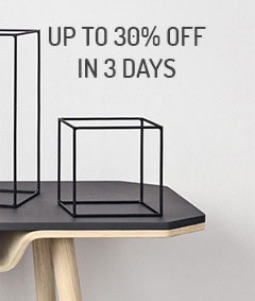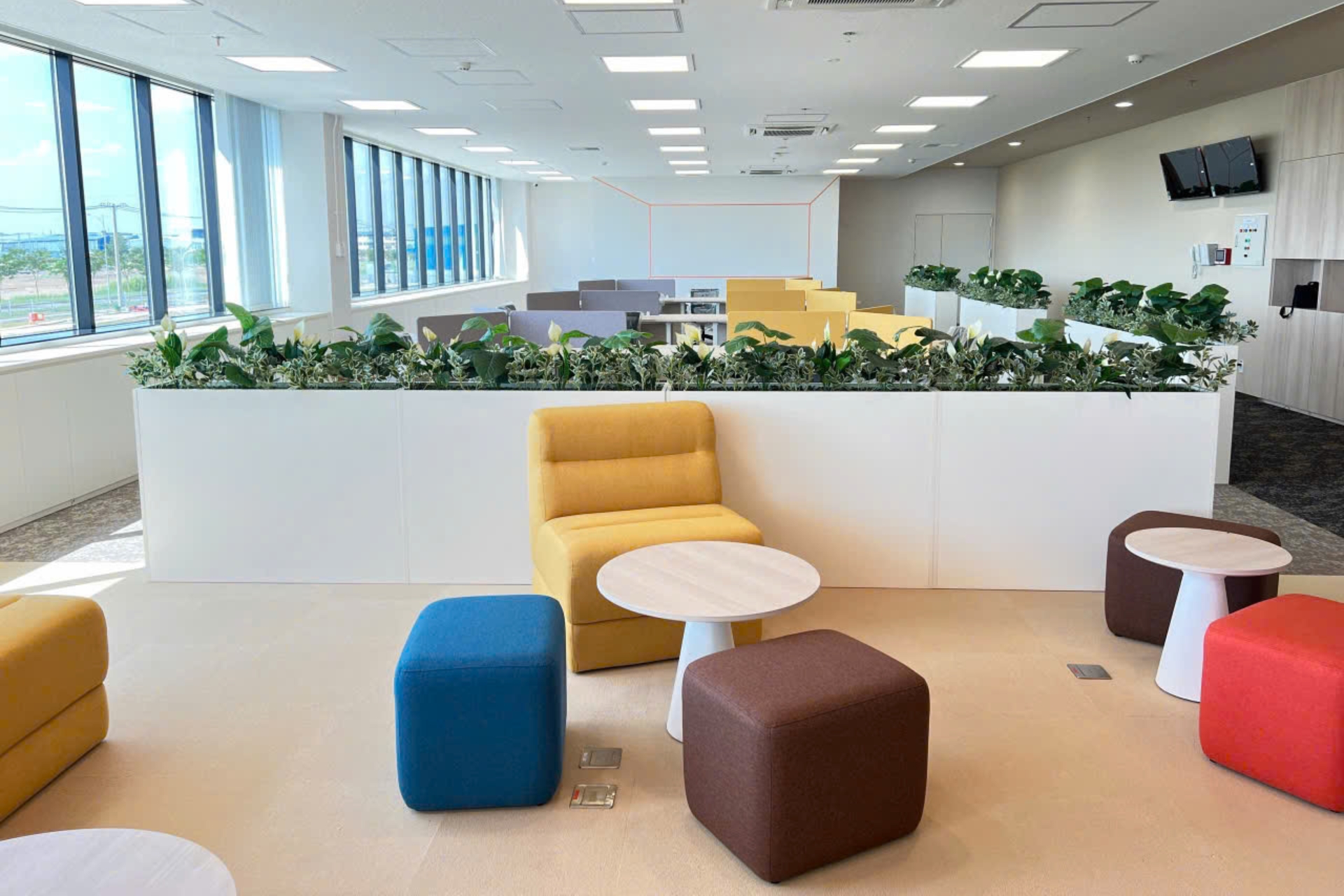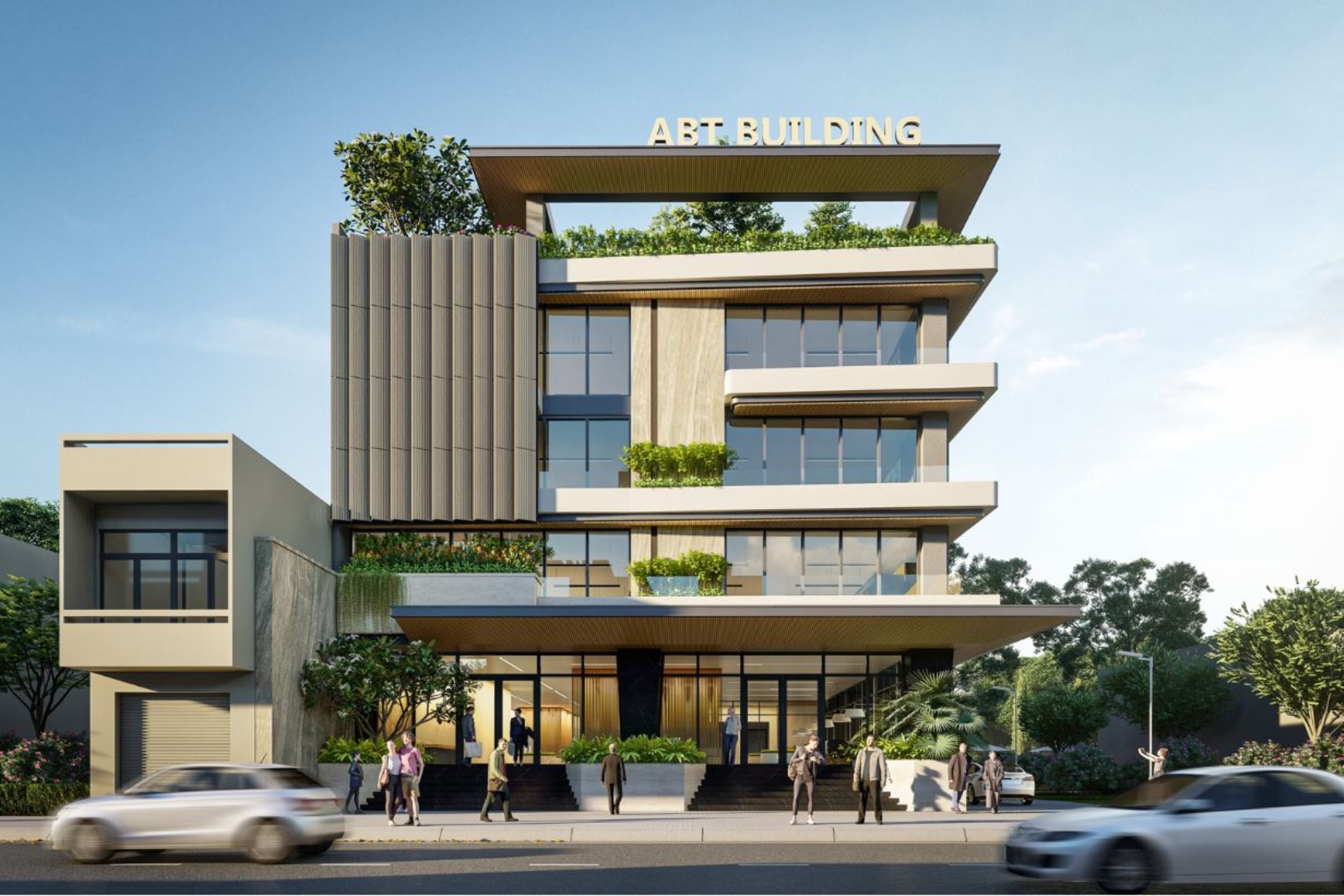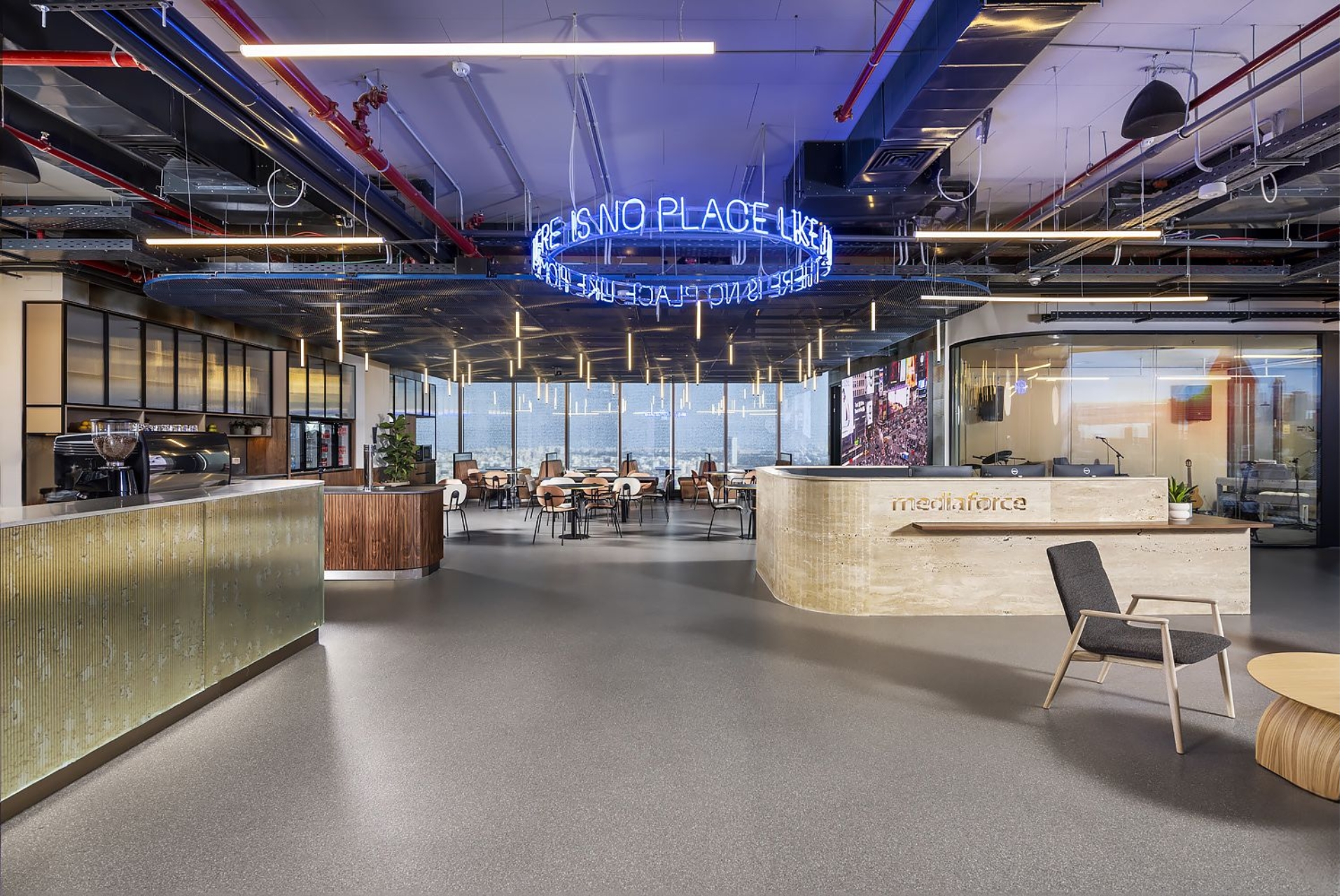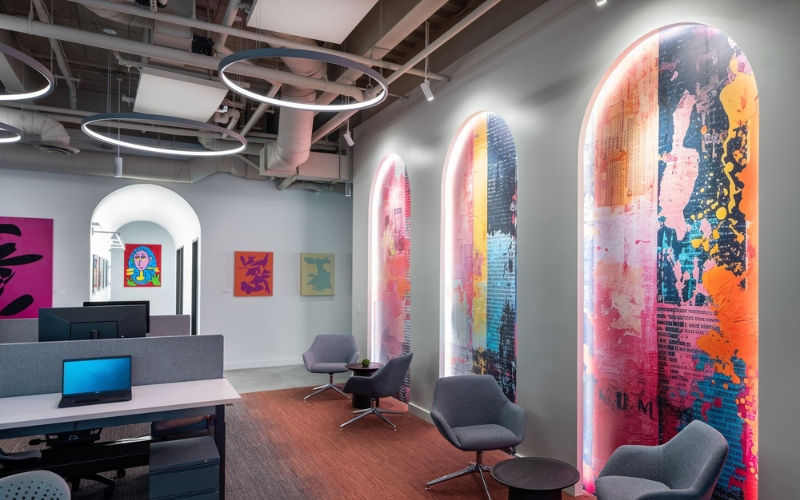
The impact of office design on work performance
An effective office design is not merely about aesthetics and functionality but also serves as a strategic approach to enhance productivity, employee satisfaction, and long-term engagement with the company. Let TECO help you explore the significance of office design on work performance and the most popular design models that help boost productivity.
The Importance of Effective Office Design
Enhancing Employee Focus
Employees working in a comfortable environment with adequate lighting, optimal temperature, and proper noise control tend to focus better. For instance, natural light enhances alertness and reduces eye strain.
Workspaces should be optimized with a scientific layout, minimizing clutter and ensuring easy movement, which reduces distractions and creates conditions for effective work.
Improving Connection and Communication
A dynamic work environment encourages collaboration and teamwork among employees. This necessitates the creation of open workspaces and flexible spaces.
Fostering Creativity and Motivation
Colors play a significant role in influencing employees’ creativity. For example, blue often induces calmness and relaxation, while orange and yellow evoke energy and creativity. Additionally, furniture shapes and materials contribute to fostering creativity and motivation.
Reducing Stress and Creating Balance
Beyond workspaces, rest areas and office recreation zones are crucial. These areas help employees reduce stress and recharge after intense work hours. When employees achieve balance and have personal space, they feel more comfortable, manage their work better, and are more productive.
Office Design Models That Improve Work Performance
Biophilic Office Design
Biophilic office design incorporates nature into the workspace. It is not just about adding greenery but also about structuring the office in an eco-friendly manner. Below are some common approaches to implementing biophilic office design:
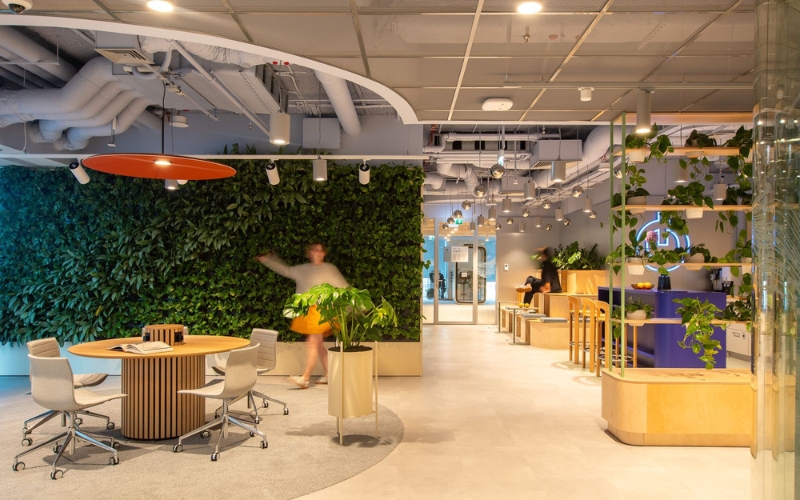
The trend of greening the workspace with the Biophilic model.
- Greening the Workspace: Adding potted plants or green walls enhances aesthetics, purifies the air, and reduces noise, helping employees feel relaxed and focused.
- Maximizing Natural Light: Incorporating large windows or glass panels allows natural light to flood the workspace. If natural light is not accessible, artificial lighting that mimics natural light should be used for comfort.
- Using Natural Materials: Incorporate natural materials like wooden desks, chairs, or flooring. Combining these with natural stone, bamboo, or other eco-friendly materials can make the office more sustainable.
Open Office Design
To foster collaboration and teamwork, an open office design is essential. This layout eliminates barriers like walls and reduces the number of private offices. Instead, transparent glass partitions are used to maintain necessary privacy while ensuring an open, airy ambiance.
Open workspaces often utilize flexible furniture, such as movable desks and chairs, modular furniture that can be easily rearranged, or mobile shelves and cabinets for convenience.
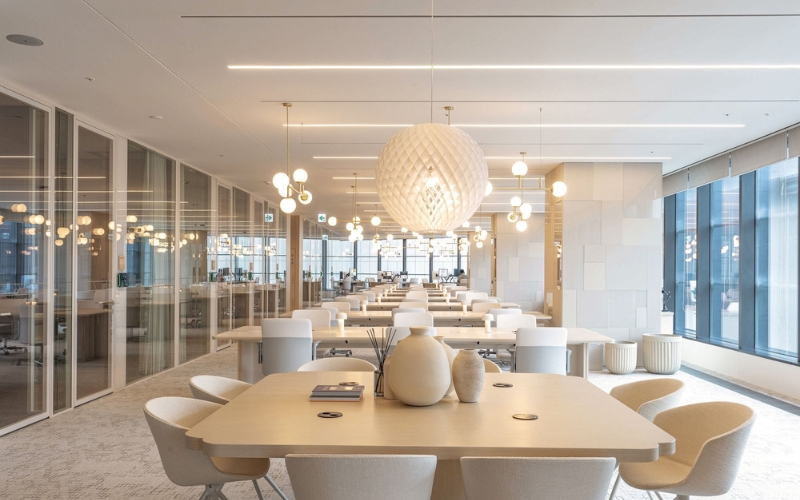
Open offices help increase collaboration and teamwork among members.
Color-Focused Office Design
Office colors significantly impact employee moods, emotions, and productivity. Each color elicits a different emotional response. When designing, it’s essential to reflect the brand identity while aligning colors with the functions of each space. For example:
- Use blue or green tones for focused work areas.
- Yellow or orange for creative spaces.
- Neutral tones with bold accents for meeting rooms.
Proper color use creates a comfortable environment and boosts employee efficiency. It’s vital to consider corporate culture, job nature, and employee emotions when designing.

The color of the office affects the mood, emotions and work performance of employees.
Recreation and Relaxation Areas
Rest and recreational areas are essential components of modern office design. These spaces enhance mental health, foster creativity, and improve employee performance. Examples include coffee bars, reading corners, game rooms, meditation or yoga rooms, and creative corners. Each company can tailor these spaces to their needs and culture. These areas not only increase comfort but also improve employee satisfaction and loyalty.
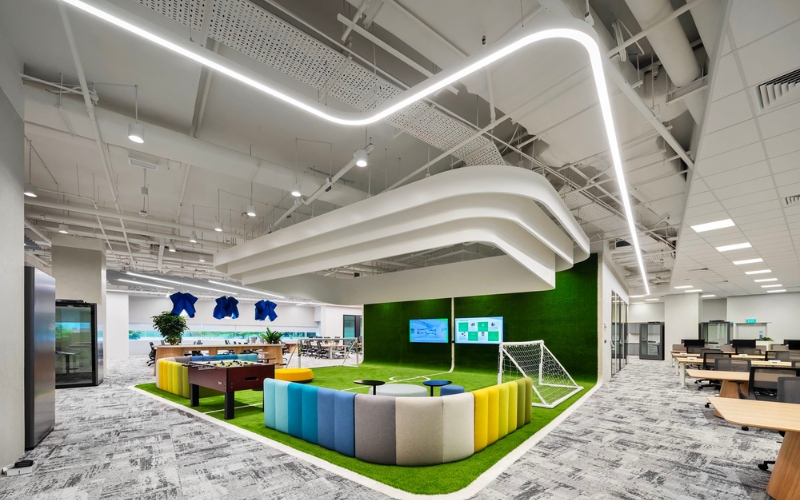
The color of the office affects the mood, emotions and work performance of employees.
Noise-Reducing Office Design
Noise can significantly hinder employees’ productivity when they need to concentrate. To address this, many offices opt for noise-reducing materials such as soundproof walls, acoustic flooring, and noise-absorbing ceilings. Additional solutions include soundproof booths, phone booths, or private meeting rooms. These measures effectively reduce noise, creating a professional, comfortable, and focused work environment.
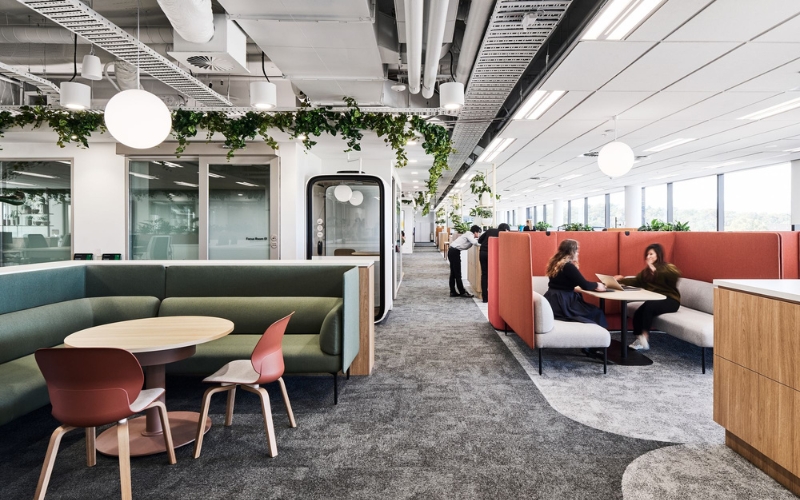
The color of the office affects the mood, emotions and work performance of employees.
Office design is a harmonious blend of aesthetics, functionality, and employee comfort, aimed at maximizing productivity. Through this article, TECO hopes to provide your business with insights into the importance of office design, empowering you to adopt strategies that motivate, encourage, and enhance employee performance.
